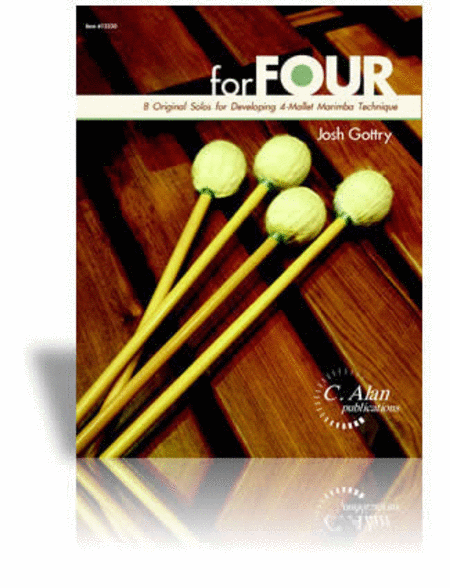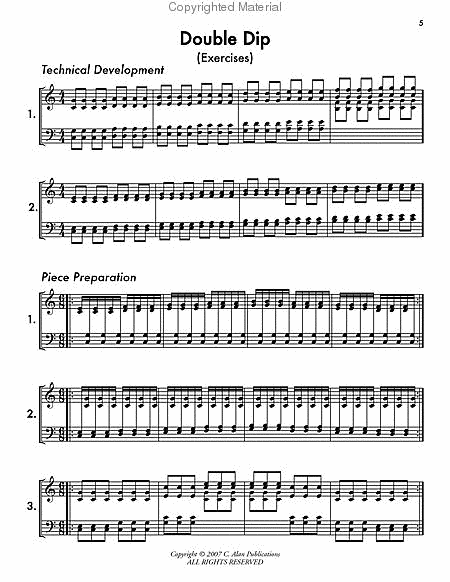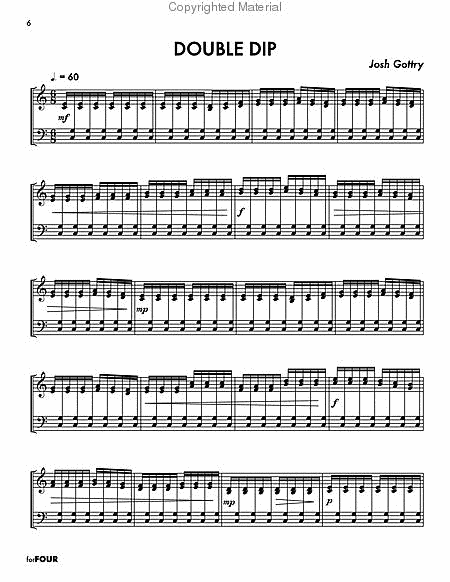For Four
7 Original Solos for Developing 4-Mallet Marimba Technique
-
Ships in 3 to 4 weeks
Details
Description
SKU: CN.13230
7 Original Solos for Developing 4-Mallet Marimba Technique. Composed by Josh Gottry. Percussion Music. Solo part. Duration 10:00. Published by C. Alan Publications (CN.13230).Josh Gottry's For Four is loaded with excellent solos and exercises for the advancing mallet player. For each solo in this wonderful collection, there is a full page of exercises meant for technical development (concentrating on the strokes being used in the piece) and piece preparation (concentrating on specific patterns found in the piece). This is a great method book for those just learning how to play with 4 mallets. You will find that For Four really fills a gap in the early 4-mallet marimba literature.
For each solo in this wonderful collection, there is a full page of exercises meant for technical development (concentrating on the strokes being used in the piece) and piece preparation (concentrating on specific patterns found in the piece). You will find that For Four really fills a gap in the early 4-mallet marimba literature. Notes from Composer In these short selections for 4-mallet marimba, I've attempted to isolate and strategically combine the four stroke types typically identified in 4-mallet keyboard percussion. The four stroke types are as follows: Double Vertical Stroke: Both mallets in the same hand move vertically and strike two notes simultaneously. You should strive to execute the notes as a precise double stop, without any flam sound. Single Independent Stroke: One mallet in the hand moves independently to strike the marimba, rotating on the other mallet such that it does not move. Focus on making sure the other mallet in that same hand maintains limited motion. Single Alternating Stroke: This stroke requires a rotation motion for alternating strokes between mallets within the same hand. The wrist pivots on an unseen central point such that while one mallet is going down, the other is moving up. Double Lateral Stroke: Similar to the Double Vertical Stroke in that both mallets approach the marimba at the same time. However, before striking, the wrist rotates quickly to create two separate notes in rapid succession, thus utilizing one motion to achieve two successive pitches.



 Share
Share